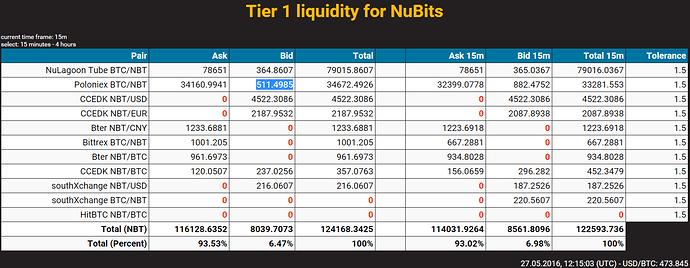I marked bold what is a claim for which we don’t have evidence.
The exchange default risk and all assiciated risks (account hack, theft, etc.) and operator costs are indeed the same.
But we don’t know how the spread affects the costs of the NAV of the operation, which will in one way or another have an effect on the costs, which in the end allpies for both Nu funded operations like the gateways and decentralized liquidity like ALP and MLP.
The smaller the spread, the smaller chance of making revenue from the spread. If you operate at SAF=0 there is 0 chance to make revenue.
If the spread is too high, the chance for making revenue is small, too. People just won’t trade. No trades -> no revenue.
Between an insanely close spread and a too big spread might be a sweet spot, where
trading volume * revenue (in percent) per trade
has a maximum per time frame
If the quality of the peg is perceived as great at this sweet spot, we should focus on that spread or else find a place close to it, where the peg is good and the costs are minimized.
There might be effects on that other than the spred alone: the particular exchange, the BTC volatility, the total volume at the order book, etc.
Market aware trading might be necessary.
Just saying a smaller spread is better just doesn’t work in such a complex world!
It might be better for the brand image of Nu, but it possibly comes at costs, we currently don’t know.
If the value of Nu increases by $100k from a better brand image, but you need $300k to get there, it might be better to increase the brand image by $50k while spending $100k. These numbers are random and just an example to make clear what I mean.
We need data.
That’s why I drafted
I want to gather data!


